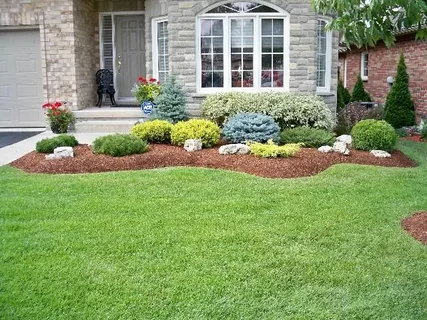Consider incorporating zinnias, known for their bold hues and resilience in sunny spots. These blooms thrive in well-drained soil and require minimal care, making them an excellent choice for a lively display.
Next, marigolds offer a stunning array of oranges and yellows. They are not only visually appealing but also serve as natural pest deterrents, enhancing the health of nearby plants. Plant them in clusters to create a striking effect.
For a touch of elegance, consider cosmos. Their delicate petals and airy foliage complement any arrangement beautifully. These plants flourish in average soil conditions and can tolerate drought, making them a fantastic addition for carefree summertime enjoyment.
Additionally, incorporating sunflowers will add height and drama to your outdoor retreat. These towering plants thrive in full sun, producing eye-catching blooms that attract pollinators and provide a sense of joy and warmth.
Lastly, adding petunias will introduce a splash of color and fragrance. Their versatility allows for both ground cover and container use, while they thrive with consistent watering and sunlight exposure.
Choosing the Right Blooms for Your Climate
Select heat-tolerant options like Zinnias and Sunflowers in regions with high temperatures. They thrive under the sun and endure dry spells, providing ample joy. For cooler climates, consider Pansies and Snapdragons, offering resilience and a splash of color even as temperatures fluctuate.
If you’re in a humid area, try Impatiens and Begonias; they flourish where moisture is abundant. Conversely, in arid settings, succulents and Lavender work wonders, needing minimal water and adding unique textures.
Evaluate your local frost dates to avoid planting sensitive varieties too early. Marigolds and Petunias do well in temperate zones, yet they are not frost-hardy. Adapt your choices based on soil quality as well; well-draining soil suits many, while heavier soils benefit from resilient types like Coneflowers.
Consider the native species of your region as they typically require less maintenance and adapt easily to local weather patterns. These options often attract beneficial pollinators, enhancing the ecological balance.
Finally, design your selection around your garden’s exposure to sunlight. Shady spots favor Begonias, while full-sun sites can boast the brights of different colors with Marigolds and Salvia. Tailor your choices to create a thriving, eye-catching display throughout the season.
Companion Planting for a Vibrant Display
Integrating specific species can enhance growth and aesthetics. For instance, consider combining marigolds with tomatoes. Marigolds deter pests, allowing the tomatoes to thrive. Similarly, planting nasturtiums near cucumbers can attract beneficial insects while repelling aphids.
Mixing tall sunflowers with lower-growing perennials adds dynamic height and contrast. The sunflowers act as natural trellises for climbing plants, maximizing vertical space. Incorporating herbs like basil near peppers not only encourages growth but adds aromatic qualities that enhance the entire area.
Utilize a diverse palette; pairing zinnias with cleomes creates a lively atmosphere. Both attract pollinators, stimulating a flourishing ecosystem. Additionally, geraniums can be placed alongside carrots to deter root maggots, providing a natural insect shield.
Consult resources such as Garden Machinery Hub or Tommy for Wisconsin for deeper insights into specific pairings that suit your local environment and available tools. This careful consideration of compatible species can significantly enhance both visual appeal and plant health.
Care Tips for Long-Lasting Blooms
Regular deadheading promotes continuous flowering. Remove spent blossoms promptly to encourage new buds. Keep stems clean and free from disease by cutting below the wilted bloom.
Watering Techniques
Irrigate consistently, ensuring the soil remains moist but not soggy. Early morning watering is beneficial, allowing foliage to dry throughout the day, which reduces fungal risks.
Soil Quality
Utilize well-draining soil enriched with organic matter like compost. A soil test can help determine pH levels and nutrient needs, allowing tailored amendments for enhanced growth and bloom output.
Regularly monitor for pests and disease. Early intervention with eco-friendly insecticides or fungicides can prevent damage. Promote beneficial insects, like ladybugs, to maintain ecological balance.
Fertilizing every 4-6 weeks during peak growth ensures ample nutrients. Opt for balanced, water-soluble fertilizers to support ongoing development and vibrant hues. Gradually increase fertilizer concentration as blooms mature to avoid shock.
By following these tips, you can extend the beauty of your botanical selections throughout the sunniest months.
Combining Colors for Maximum Visual Impact
Utilize complementary hues to create striking contrasts. For instance, pair sunny yellows with deep purples. This approach draws attention and enhances the visual dynamics of your patch. Consider these combinations:
-
Orange with blue for a fresh and invigorating feel.
-
Red alongside white for a classic, timeless appeal.
-
Pink with green for a soft, romantic atmosphere.
Implement triadic schemes for balanced aesthetics. Select three colors evenly spaced on the color wheel, like red, yellow, and blue, to maintain harmony while still achieving interest.
Incorporate various shades of a single color to build depth. Layering different tones, such as light and dark variations of pink, creates a rich and cohesive look.
Utilize foliage as a backdrop to make brighter shades pop. Dark greens or silvers can serve as a neutral canvas that allows splashes of color to stand out.
Assess the bloom times of chosen varieties to ensure continuous allure throughout the season. Mixing early, mid, and late bloomers allows for sustained visual interest and a dynamic display.
Experiment with textures and shapes to enhance color pairings. Tall spiky forms can complement rounder blooms, adding complexity to the scene. Think about varying heights to create layers that engage the eye.
Finally, consider the surrounding environment. Take into account nearby structures and pathways, using color to guide visitors through the area. A warm color palette can make spaces feel inviting, while cooler tones may add tranquility.


